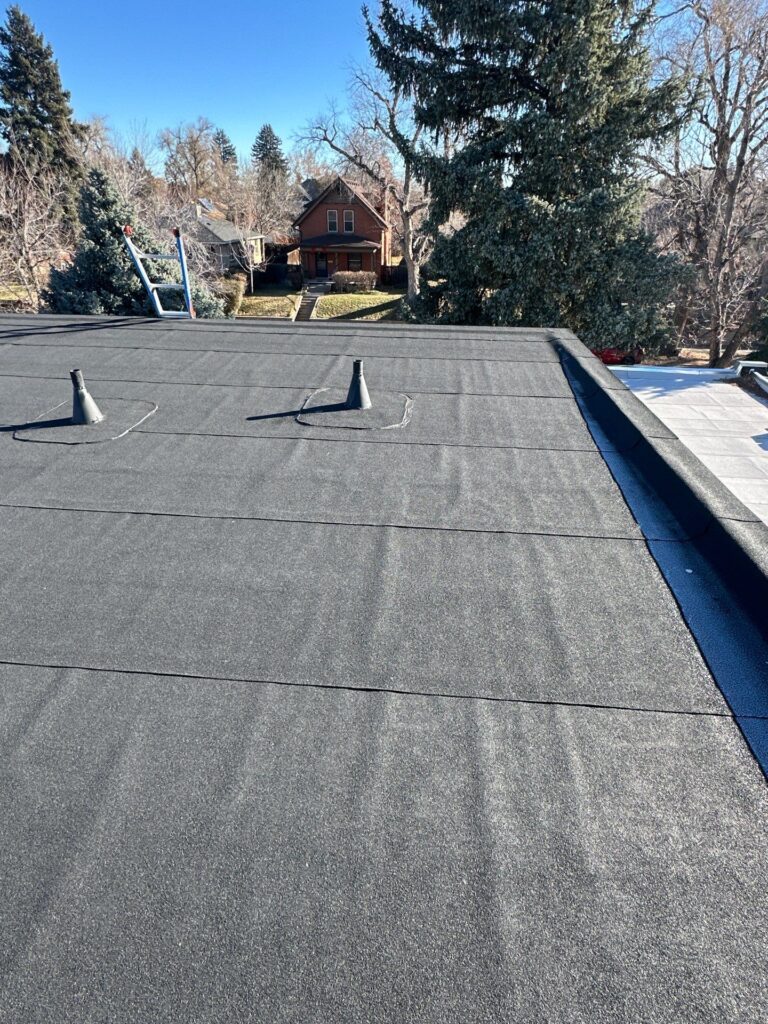Flat roofs are a popular choice for both residential and commercial structures due to their modern aesthetic and practical functionality. However, one of the most persistent and potentially damaging issues they face is blistering. Roof blisters are not merely cosmetic defects—they signal deeper problems that can compromise the roof’s performance and lifespan. Below, we break down the causes, risks, and professional solutions for flat roof blisters.
Understanding Flat Roof Blisters
Flat roof blisters are raised, bubble-like formations that appear on the membrane or coating of the roofing surface. These develop when air or moisture becomes trapped between layers of the roofing system. As pressure builds under the surface, it causes the materials to lift and form visible protrusions. Over time, these blisters can crack or rupture, leading to leaks and structural damage.
Key Causes of Flat Roof Blistering
1. Moisture Entrapment During Installation
One of the most common causes of blistering is improper installation. If moisture is present during membrane application or insulation placement, it becomes trapped beneath the layers. As temperatures fluctuate, the moisture vaporizes, creating pressure that forms blisters.
2. Inadequate Adhesion of Roofing Layers
When roofing materials are poorly bonded due to substandard adhesives or rushed application, pockets form where air and moisture can accumulate. This is especially prevalent in systems using bitumen, modified bitumen, or single-ply membranes like EPDM and TPO.
3. Thermal Expansion and Contraction
Flat roofs experience intense temperature variations throughout the year. As roofing materials expand in the heat and contract in the cold, areas with weak adhesion or trapped air become more susceptible to blistering. Without expansion joints or adequate design to handle this movement, blistering is inevitable.
4. Poor Roof Ventilation
Insufficient attic or roof ventilation leads to excessive heat buildup, especially in warm climates or summer months. This heat intensifies vapor pressure within the roofing assembly, exacerbating blister formation.
5. Lack of Regular Maintenance
Even minor issues like pinholes or loose seams can allow moisture to infiltrate. Without routine inspections and timely maintenance, these problems accumulate and result in widespread blistering across the flat roof surface.
Risks and Consequences of Ignoring Roof Blisters
Roof blisters may initially appear as harmless surface bubbles, but their long-term impact can be severe. If left untreated, blisters can rupture and expose the underlying layers to moisture intrusion. This accelerates membrane degradation and leads to:
- Water leaks and interior water damage
- Mold and mildew development
- Compromised insulation performance
- Structural weakening of roof decks
- Premature roof replacement
Effective Repair Methods for Flat Roof Blisters
Addressing roof blisters demands professional expertise and precision. Here’s how certified contractors approach the issue:
Inspection and Diagnosis
The first step involves a comprehensive roof inspection to assess the extent of the blistering. Infrared scanning or core sampling may be used to detect hidden moisture and delamination.
Removal of Damaged Sections
Blistered areas are cut open and evaluated. If the membrane is still intact and dry underneath, it may simply be re-adhered. If moisture damage is present, the affected sections must be removed.
Drying and Surface Preparation
The exposed roof deck or insulation is dried thoroughly. A primer may be applied to enhance adhesion for the new membrane.
Patch or Overlay Application
Depending on the severity, a compatible patch or new membrane section is installed with proper adhesives. Edges are sealed and reinforced to prevent future failures.
Post-Repair Testing
After the repair, the area is tested for watertightness and proper bonding. A quality contractor will document the repair and provide maintenance recommendations.
Prevention: Long-Term Strategies for Flat Roof Health
1. Hire Certified Roofing Professionals
Improper installation is the root cause of many flat roof failures. Ensure your flat roof is installed by licensed, experienced contractors with proven expertise in low-slope roofing systems.
2. Schedule Regular Roof Inspections
Twice-yearly inspections—preferably in spring and fall—help detect early signs of blistering, punctures, or membrane separation. Prompt action can prevent expensive repairs.
3. Ensure Proper Roof Ventilation
Good airflow in the attic or under the deck reduces heat buildup and minimizes vapor pressure, a key contributor to blister formation.
4. Invest in High-Quality Materials
Opt for advanced roofing membranes with built-in resistance to moisture, UV rays, and thermal stress. These materials are less prone to blistering and have longer lifespans.
5. Address Drainage Issues Promptly
Standing water on flat roofs promotes moisture intrusion. Ensure drains, scuppers, and gutters are free from obstructions and functioning efficiently.
Flat Roof Blistering in Denver: Local Considerations
In Denver, Colorado, the climate presents a unique challenge to flat roofing systems. With intense UV exposure, snow accumulation, and sudden temperature shifts, roofing in Denver demands specialized knowledge and durable materials. Tried and True Roofing, a trusted name in roofing services in Denver, Colorado, offers expert installation and repair services tailored to local conditions.
Whether you’re looking for roof repair in Denver CO or a full flat roof replacement, choosing a qualified roofing company in Denver ensures your investment is protected from blister-related damage. Roofing companies in Denver Colorado must account for seasonal extremes that can easily lead to blistering if not properly addressed.
Conclusion
Flat roof blisters are a sign of underlying roofing system failure and should never be ignored. By understanding their causes, risks, and professional solutions, property owners can take proactive measures to extend their roof’s lifespan and safeguard their building. Whether you’re managing commercial property or maintaining a home, regular inspection and expert intervention are key to keeping blistering at bay. Trust your roof to experienced Denver roofing contractors who understand the region’s demands and deliver long-lasting solutions.


